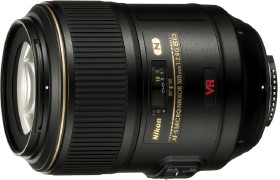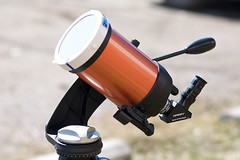First impressions: Nikon 105mm macro lens
 Last week I bought another new lens — Nikon’s 105mm macro lens. (That makes seven, in case you’re wondering.) I took advantage of the Henry’s eBay channel and got it for more than $200 less than it would have normally cost, but it’s still the most expensive lens I’ve ever bought. (I have another lens that costs more new, but I bought it used.) It’s also the heaviest: at 750 grams, it weighs more than the camera it’s attached to. The thing is a tank — no surprise there, it’s a professional, full-frame lens.
Last week I bought another new lens — Nikon’s 105mm macro lens. (That makes seven, in case you’re wondering.) I took advantage of the Henry’s eBay channel and got it for more than $200 less than it would have normally cost, but it’s still the most expensive lens I’ve ever bought. (I have another lens that costs more new, but I bought it used.) It’s also the heaviest: at 750 grams, it weighs more than the camera it’s attached to. The thing is a tank — no surprise there, it’s a professional, full-frame lens.
I’ve had a chance to run it through its paces a bit; here are my test shots. I bought this lens for four purposes: as a macro lens (natch), as a portrait lens, as a fast telephoto prime, and for astrophotography. I haven’t gotten good results using it for macro photography: a fast macro lens isn’t much good, because there’s absolutely no depth of field at f/3, so I need to stop it down and throw some more light at my target (one of these will probably be necessary at some point). There’s a lot of focus travel, so it can be a bit challenging keeping moving snakes in focus; I imagine I’ll be suffering some frustrations there. But as a portrait lens and telephoto prime, it’s fantastic — so scary-sharp that I can crop like crazy and still end up with a great image. I haven’t tested it for wide-field astrophotography yet, but I’m betting the ED glass will yield good results.
I expect to use this lens a lot — a good thing considering how expensive it is. Probably the last lens I buy for a while. (Yes, you can point to this blog entry later on if I backtrack on that statement.)


